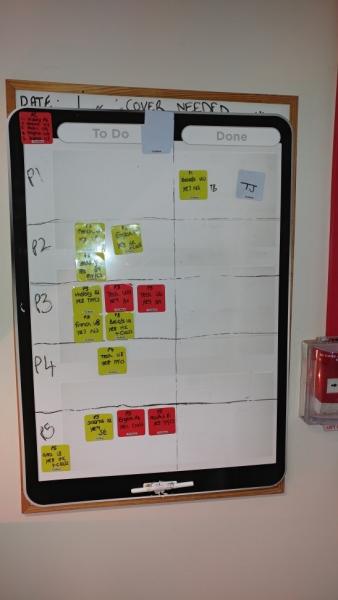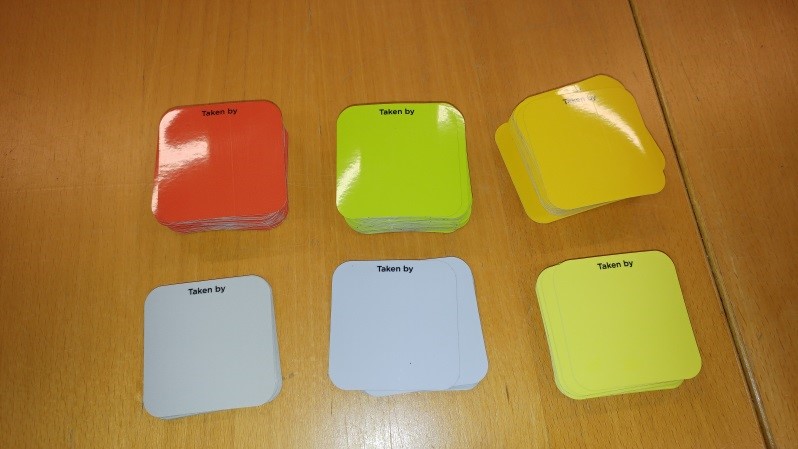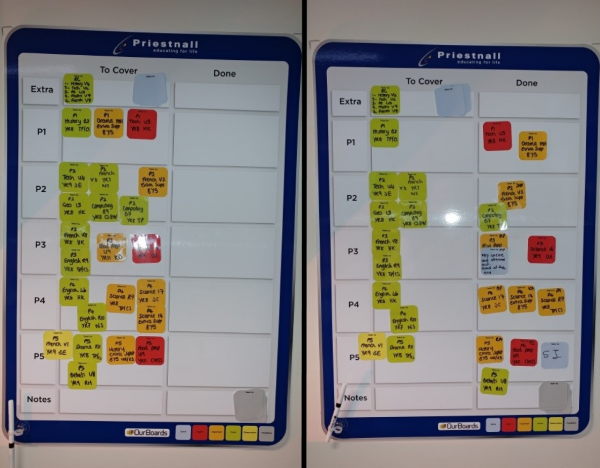Prioritising the time and attention of support staff is a daily challenge in many schools. Here's one simple but effective technique for coordinating cover.

We are all too aware of the financial and systemic barriers to provision for SEND that is appropriately resourced and well allocated.
As a new curriculum support manager, making day-to-day arrangements for our teaching assistants and other support staff, I was conscious of having to rethink our ways of working in this austere climate.
Although the school already has a strong selection and induction programme for new staff, I became increasingly aware of our need to provide more flexible support and get more from the resources available.
Sitting in lessons with students that work independently is rarely the best way for TAs to work, but even with good liaison and planning they won’t necessarily know the format of every lesson in advance.
Previously we had worked from individual student timetables, which meant that, when any changes occurred, the TA would spend valuable time seeking instruction from the curriculum support manager. This could take a few minutes to a lot longer, depending on where they were (and if I was in a meeting); clearly an inefficient use of a valuable resource.
Having an individual timetable as a reference tool was important, but we found that the demand for additional support, particularly among students at School Support stage, fluctuated on a daily, sometimes hourly basis. This meant that the faculty was under great strain to meet students’ requirements flexibly.
There are never enough TAs to work with number of students with SEND we would like to cover, so I set myself the task of making better use of who we have.
After discussions with staff and an excellent local company OurBoards (more on their products later), we developed some initial prototypes for a daily cover board [see right].

The board is a simple but effective way to communicate priority of need on a lesson-by-lesson basis. It displays the students and classes that require support, observation, urgent intervention and so on, with colourful ‘gecko’ stickers [Figure 1] that can be moved around once a member of staff has completed a task.
I introduced the idea to our TAs in one of our morning meetings, and sought feedback. It’s important that the people who use it have a say in what we’re trying to achieve.
Each day, my responsibility is to:
Once I have all that information I start writing the cards, deciding what lesson goes on what colour.
I also have yellow cards for lessons I want to be observed, and grey cards for feedback from TAs. Once they go on the board, the TAs are then able to prioritise their workload in line with certain needs. If they arrive to a lesson where they aren’t needed, or if the student they are timetabled to work with goes home, they can go to the board and take something from it.
In addition, I created a blue card for TAs to show when they are working on their CPD. This helps the TA to decide when it’s suitable to take time for CPD, but also lets me know when they’ve taken it.

Figure 1: some of the differently coloured cards we add to the board
At the end of each day, I can glean from the board:
This will inform how we work to improve provision and prioritise need for support in the future.
This is a first and foremost a collaborative project. Giving TAs responsibility for decision-making has improved their confidence and reinforced the fact that they make a valuable contribution.

Figure 2: the board at the start of the day (left) and the end of the day (right). Note the ‘To cover’ cards have moved to the ‘done’ column
From a safeguarding point of view, it is very clear where everyone is located at all times – you can always track someone down. It also shows the demand for additional support that we have above statutory requirements and what we have been able to achieve each day.
Finally, this has given everyone the benefit of time. TAs prefer coordinating and prioritising their time via the board as they no longer have to seek me out whenever they need direction. This time is now spent getting to lessons and supporting students.
Meanwhile, I can direct and develop my team without being in constant demand!
We are very grateful for the support and expertise in designing the boards provided by Neale at OurBoards.
 Make an impact
Make an impactDownload your copy of our resource pack for teachers and TAs, Teaching assistants with impact: a toolkit.
The 30-page booklet features resources, strategies and case studies to support effective teacher and TA partnerships.